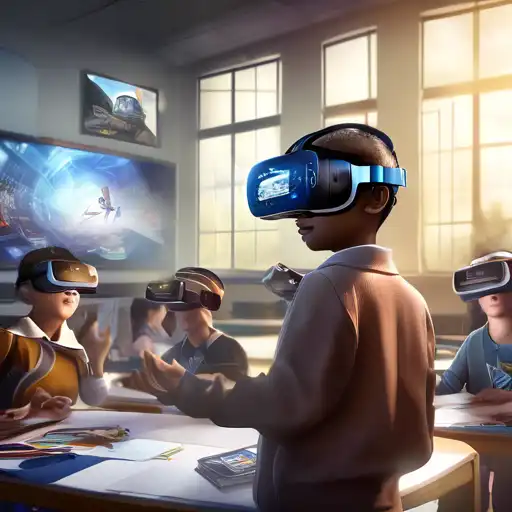Introduction to Virtual Reality in Education
Virtual Reality (VR) is revolutionizing the educational landscape, offering immersive learning experiences that were once beyond imagination. This technology transports students to virtual worlds, making learning more engaging, interactive, and effective. As we delve into the potential of VR for education, it's clear that we're standing on the brink of a new era in teaching and learning.
The Benefits of VR in Learning Environments
VR in education brings numerous benefits, including enhanced engagement, improved retention rates, and the ability to simulate real-world scenarios. Students can explore historical sites, dissect virtual frogs, or even travel through the human bloodstream, all from the safety of their classroom. This hands-on approach caters to various learning styles, making education more inclusive.
Implementing VR in Schools: Challenges and Solutions
Despite its potential, the integration of VR into educational settings faces challenges such as high costs and the need for technical expertise. However, solutions like educational technology grants and professional development programs for teachers are making VR more accessible. Schools are also partnering with tech companies to bring affordable VR solutions to the classroom.
Case Studies: VR Transforming Education
Several institutions have successfully integrated VR into their curricula. For example, medical students are using VR to practice surgeries, reducing risks and improving outcomes. Similarly, history classes are visiting ancient civilizations through VR, making lessons more vivid and memorable. These case studies highlight the transformative power of VR in education.
Future Prospects of VR in Education
The future of VR in education is bright, with advancements in technology making it more affordable and user-friendly. As VR becomes more mainstream, we can expect to see its application expand to more subjects and grade levels, further enhancing the learning experience. The potential for global classrooms, where students from around the world can learn together in a virtual space, is particularly exciting.
Conclusion
Virtual Reality is set to redefine the educational experience, making learning more interactive, engaging, and effective. While challenges remain, the benefits of VR in education are undeniable. As technology continues to evolve, the possibilities for VR in education are limitless, heralding a new era of digital learning.
